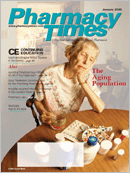Publication
Article
Pharmacy Times
Girls' Tummy Fat Predicts Future Health Problems
Author(s):
A larger waistline at early adolescencemay mean an increased risk of diabetesor heart trouble in early adulthood,according to a recent study published inthe journal Pediatrics. After trackingmore than 1000 black and white girlsfrom age 10 or 11 until age 18 or 19 inthe Cincinnati, Ohio, and Washington, DC,areas, researchers found a 16% increasedlikelihood for developing metabolicsyndrome among those girls withincreased tummy fat, or central adiposity.This tummy fat is considered a moreimportant predictor than high bloodpressure or high cholesterol in childhood.Metabolic syndrome requires any3 of the following 5 conditions: waistlineof at least 40 inches in men and 34 inchesin women; triglyceride levels of atleast 150 mg/dL; high-density lipoprotein(HDL) levels of 40 mg/dL or less in menand 50 mg/dL or less in women; bloodpressure of at least 130/80 mm Hg; andglucose level of 110 mg/dL. These factorswere measured in the girls when theywere 10 or 11 years old and again whenthey were 18 or 19 years old. Only oneblack girl and one white girl had 3 of the5 factors when measured at adolescence.At follow-up, however, 3.5% of the570 black girls and 2.4% of 500 whitegirls met 3 of the 5 conditions. The studydid not take into account high bloodpressure, insulin, triglyceride, or HDL cholesterollevels in the increased risk ofmetabolic syndrome. In a separate study,girls with increased waistlines at adolescence,but normal waistlines at earlyadulthood, had no increase in metabolicsyndrome.
Ms. Farley is a freelance medicalwriter based in Wakefield, RI.







